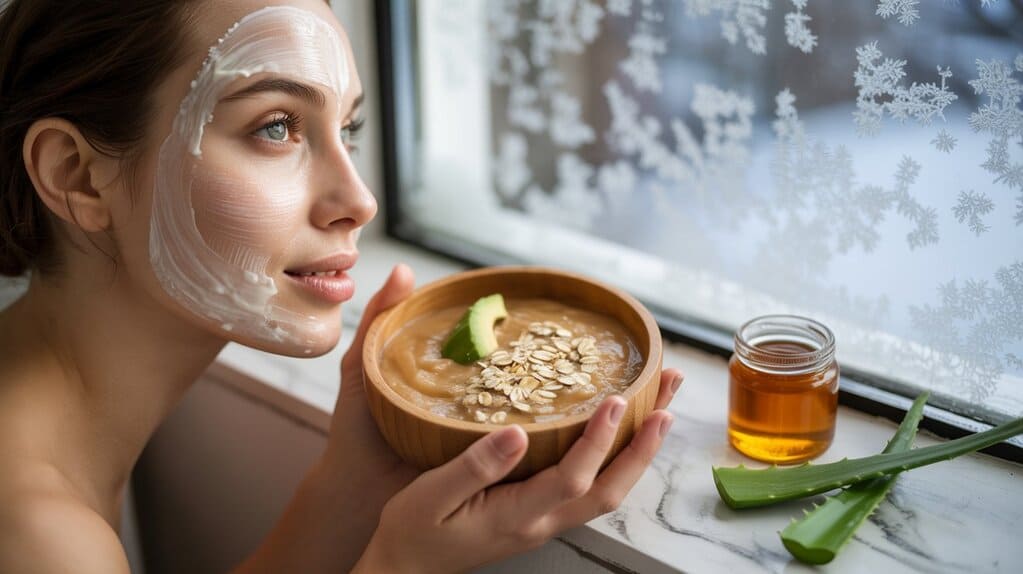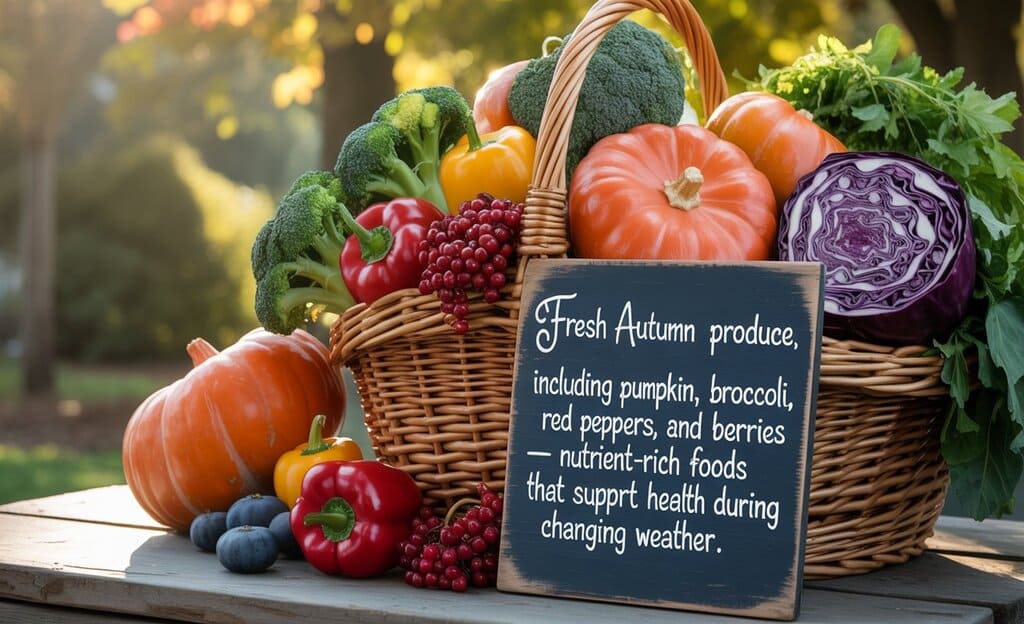
Introduction
As late summer fades into early autumn, temperatures begin to roller-coaster—warm afternoons, brisk mornings, and damp, windy evenings. These abrupt weather fluctuations can stress our bodies, dry our airways, and make it easier for respiratory viruses to spread indoors. While no single food or drink can “bulletproof” immunity, a smart, seasonal pattern of whole foods, hydration, and polyphenol-rich drinks can meaningfully support your body’s defenses. This guide translates the best current evidence into an easy, practical plan you can use right now—built on vegetables and fruits, fermented foods, mushrooms, aromatics like garlic and ginger, green tea, elderberry, and vitamin-D–rich options such as oily fish and eggs.
Quick reminder: food is foundational. Target 7–10 servings/day of produce, prioritize sleep, movement, and stress management, and speak with your clinician before adding supplements—especially if you’re pregnant, have a chronic condition, or take medications.
Key Points
- Hydration + warm beverages matter. A randomized trial found hot drinks provide immediate, sustained relief of common-cold symptoms versus the same drink at room temperature. PubMed
- Vitamin C–rich produce (citrus, kiwi, peppers, strawberries, broccoli) can modestly shorten cold duration/severity when used regularly—not a cure, but a nudge. PubMedCochraneBioMed Central
- Zinc can shorten colds in some trials, especially >75 mg/day lozenges; recent Cochrane (2024) rates the overall evidence as inconclusive and emphasizes side-effects/dose/formulation. SAGE Journalscochranelibrary.comCochrane
- Fermented foods & probiotics may reduce URTI incidence/duration; a 2021 Cell study also showed fermented foods increase gut microbial diversity, a pillar of immune health. PubMed
- Green tea catechins (EGCG) plus theanine show preventive effects against influenza/URTIs in some RCTs. (Background on EGCG via Wikipedia.) PubMed+1
- Mushroom β-glucans may modulate innate immunity (human trials exist; quality varies). (Background on β-glucan via Wikipedia.) PubMedPMC
- Elderberry has evidence for shorter URTI duration in travelers and meta-analyses, though study quality is mixed—use standardized products. cochranelibrary.com
- Vitamin D status tracks with respiratory outcomes; meta-analyses suggest supplementation helps those who are deficient, though findings in recent years are more nuanced. Food sources still matter in autumn. PubMedThe Lancet

Body
1) Hydration and the Power of Warm Drinks
Dry indoor air + cool winds can dehydrate airway surfaces, making mucus thicker and ciliary movement less effective. Plain water, mineral water, and lightly salted broths re-hydrate; warm infusions (ginger-lemon, green tea) offer comfort and may ease symptoms.
- In a randomized controlled trial of cold/flu sufferers, a hot fruit drink didn’t change measured nasal airflow, but significantly improved subjective symptoms (runny nose, cough, sneezing, sore throat, chilliness, tiredness) versus the identical drink at room temperature. That’s a low-risk, high-comfort win for chilly mornings and nights. PubMed
How to use it: Aim for 2–3 warm cups/day during the swingy first weeks of fall. Add ginger and lemon slices; sweeten cautiously with honey if desired (avoid honey for children <1 year).
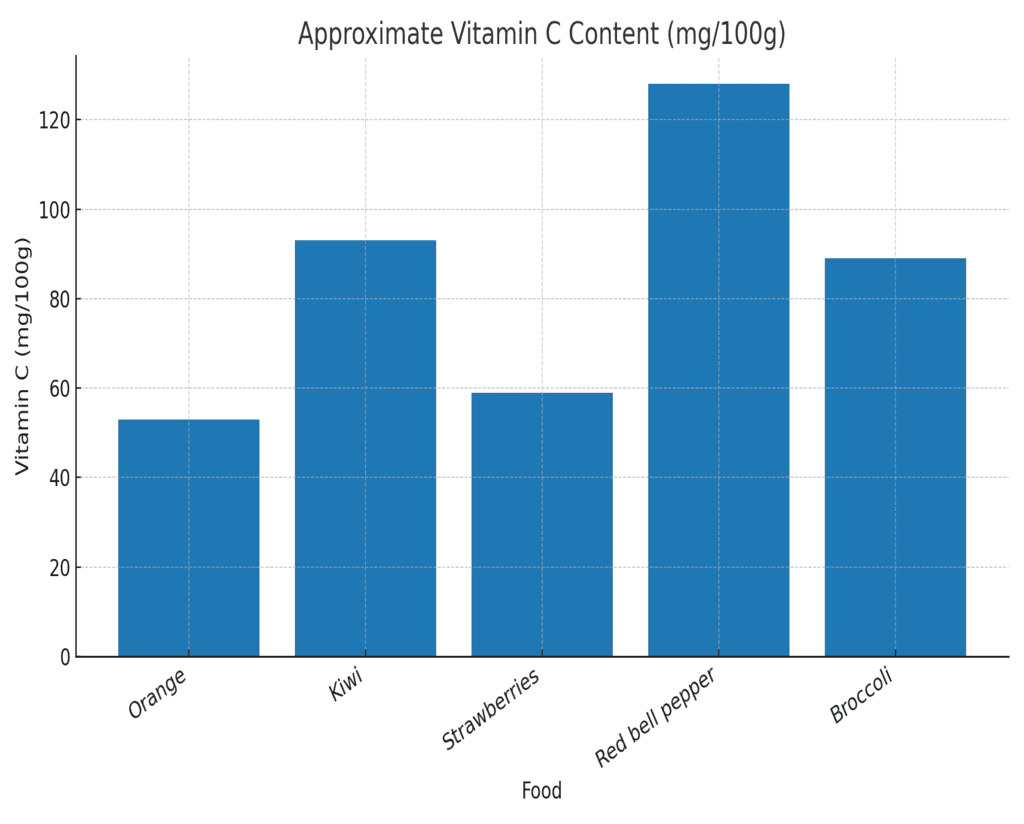
2) Vitamin C–Rich Produce for Mucosal Defense
Vitamin C supports neutrophil function, epithelial barrier integrity, and antioxidant recycling. The Cochrane Review (and updates/meta-analyses) agree on a key point: for the general population, vitamin C doesn’t prevent colds outright, but regular intake can shorten duration and/or reduce severity modestly. CochranePubMedBioMed Central
Best seasonal picks: Citrus (oranges, clementines), kiwi, bell peppers, broccoli, and strawberries. See the simple chart below for approximate vitamin C values per 100 g.
Practical tip: Use food first. Build a daily “C-stack”: citrus at breakfast, peppers in salads/stews, and a kiwi or strawberries for dessert.
3) Zinc: What the Latest Evidence Says
Zinc participates in antiviral immunity and may interfere with rhinoviral replication in the nasopharynx. Here’s the nuance:
- Meta-analysis of high-dose zinc acetate lozenges (>75 mg/day) reported ~33–42% shorter cold duration in some RCTs. SAGE Journals+1
- However, the 2024 Cochrane review called the evidence inconclusive overall; benefits must be weighed against adverse effects (nausea, taste changes), and results vary by formulation/dose/onset. cochranelibrary.comCochrane
Food-based angle: Rather than routine high-dose supplements, include zinc-rich foods—pumpkin seeds, legumes, eggs, oysters (if available), and lean meats. If you use lozenges, follow medical advice and product instructions; avoid intranasal zinc due to anosmia risk (not discussed above but widely noted in safety advisories).

4) Fermented Foods, Probiotics, and the Gut–Immune Axis
The gut houses a major share of your immune system. Certain probiotic strains reduce the incidence/duration of upper respiratory tract infections (URTIs) in adults and children (strain-specific). A landmark Stanford/Cell 2021 trial showed that a fermented-foods diet (yogurt, kefir, sauerkraut, kimchi, kombucha) increased microbiome diversity and decreased inflammatory markers over 10 weeks. PubMed
- Background reading: Kefir and kimchi entries on Wikipedia outline composition and fermentation microbes often involved. rhinologyjournal.comcarespot.com
How to use it: Add 1–2 servings daily—plain yogurt or kefir at breakfast, kimchi or sauerkraut with lunch/dinner. If you prefer supplements, choose products with documented strains and CFU counts; evidence is strain-specific.
5) Mushrooms and β-Glucans
Mushrooms (shiitake, oyster) contain β-glucans, a class of polysaccharides that can modulate innate immunity (macrophages, NK cells). Trials using purified yeast β-glucan demonstrate fewer URTI symptom days in some settings, though quality varies and formulations differ. For approachable background on β-glucans, see Wikipedia. PubMedPMC
How to use it: Sauté shiitake or oyster mushrooms as a base for soups and stews; pair with garlic, onion, and greens. Food forms are safe and nutrient-dense (fiber, minerals, ergothioneine).

6) Green Tea, Catechins (EGCG) & Theanine
Green tea delivers catechins (notably EGCG) and L-theanine. RCTs in healthcare workers and students found lower influenza/URTI incidence with catechin + theanine capsules/tea compared with placebo, though effects are modest and can vary by dose and population. Background on EGCG: its chemistry and occurrence are well summarized on Wikipedia. PubMed+1
How to use it: Brew 2–3 cups/day (don’t over-steep to keep bitterness down). Evening drinkers may prefer decaf green tea to protect sleep.
7) Elderberry (Sambucus nigra)
Standardized elderberry syrups or lozenges have shown reduced symptom duration and improved scores in some trials—e.g., long-haul travelers experienced shorter URTIs with elderberry vs placebo, and meta-analyses suggest benefit, though study quality and product standardization vary. cochranelibrary.com
How to use it safely: Choose cooked/processed products from reputable brands (raw berries/leaves can contain cyanogenic glycosides). Use per label for short courses at first symptoms.
8) Garlic, Ginger, and Turmeric: Kitchen Medicine with Caveats
- Garlic: A classic RCT (double-blind) found fewer colds and faster recovery with a high-allicin garlic supplement vs placebo over winter; more modern trials are mixed, but the culinary case is strong and low-risk. PubMed
- Ginger & Turmeric: These aromatics deliver gingerols/shogaols and curcumin, with anti-inflammatory and antioxidant activity. They’re soothing in warm infusions and curries—especially valuable when the air cools and humidity drops.
How to use them:
- Garlic: add crushed (rest 10 minutes before heating) to soups/stews.
- Ginger tea: simmer fresh slices 10 minutes; add lemon.
- Turmeric: cook with black pepper (piperine) to enhance curcumin bioavailability.
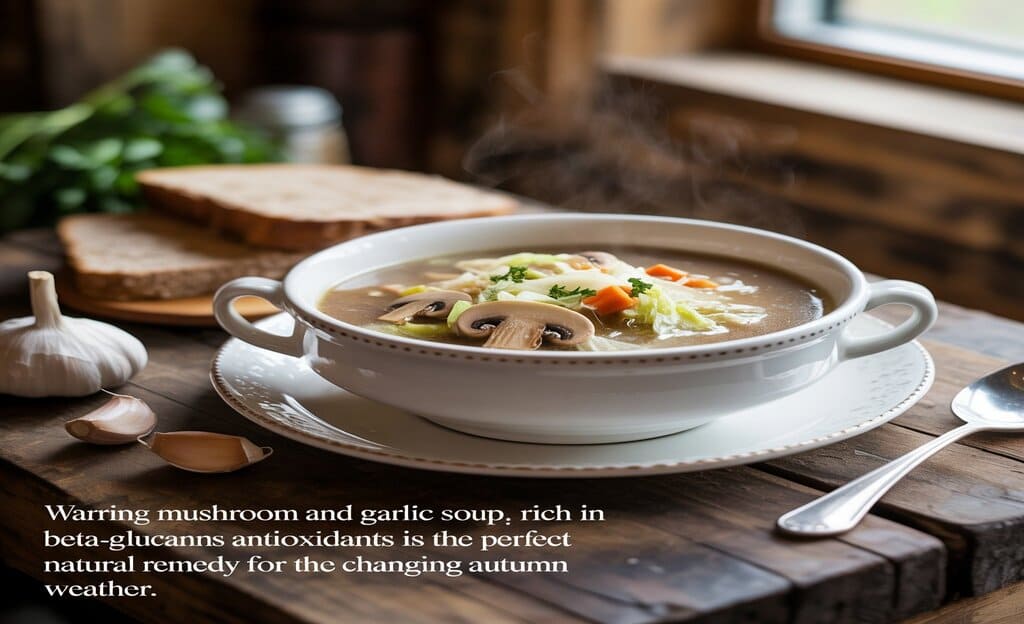
9) Vitamin D, Oily Fish, and Eggs
Shorter days and lower UVB exposure in autumn can erode vitamin D status. A 2017 BMJ individual-participant meta-analysis found vitamin D supplementation reduced acute respiratory infections, especially in those who were deficient; later analyses are more mixed, urging personalized, deficiency-targeted use. Food sources still help: salmon, sardines, mackerel, and eggs. PubMedThe Lancet
How to use it: Eat oily fish 2x/week; discuss testing/supplementation with your clinician if you have limited sun exposure or risk factors for deficiency.
10) Warm Soups, Broths, and Comfort Foods
Beyond hydration and electrolytes, soups concentrate vegetables, legumes, herbs, and proteins into an easy-to-digest, warming meal—perfect for a chilly, blustery day. Mechanistically, warm liquids soothe and support symptom relief (see hot-drink RCT above). While claims about bone broth specifically outpace hard clinical data for colds, some laboratory/animal data suggest anti-inflammatory properties; importantly, broth is a gentle vehicle for vegetables, herbs, and spices you’ll see in this guide. PubMedPMC
How to use it: Build a “Fall Immunity Pot”: onion, garlic, carrots, celery, mushrooms, leafy greens, beans or lentils, herbs, ginger, turmeric, black pepper, and lemon. Finish with olive oil for polyphenols and better absorption of fat-soluble compounds.
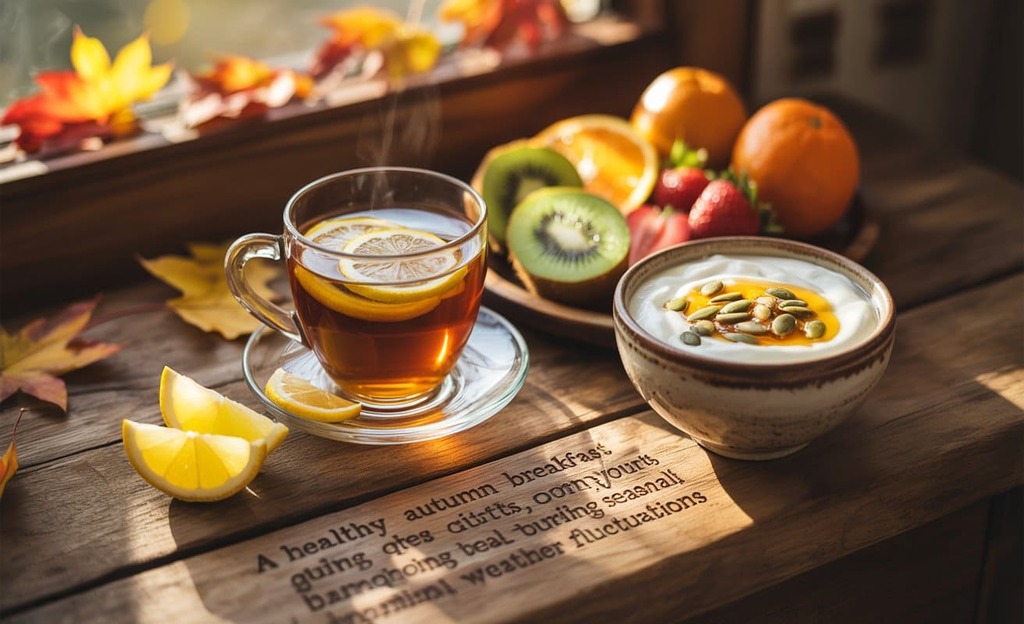
Practical Table (Foods, Actives, and Why They Help)
I’ve prepared a quick-reference table you can sort and filter for planning:
Open the table: “Autumn Immune-Support Foods & Drinks (Quick Reference)” (visible above).
It summarizes the best everyday choices—fruits & vegetables, fermented foods, mushrooms, aromatics, green tea, elderberry, oily fish, and warm soups—with their key compounds and why they help.
Simple Chart: Approximate Vitamin C Content
A quick bar chart compares vitamin C content (mg/100 g) of familiar foods (orange, kiwi, strawberries, red bell pepper, broccoli) to help you build C-rich menus in autumn.
Sample One-Day “Autumn Swing” Menu (Naturally Functional)
- Breakfast: Plain kefir with kiwi and strawberries; a handful of pumpkin seeds.
- Mid-morning: Green tea (or ginger-lemon infusion).
- Lunch: Warm mushroom-garlic soup with kale and barley; side of kimchi.
- Snack: Orange or red bell pepper strips with hummus.
- Dinner: Salmon with roasted carrots and broccoli; small baked sweet potato.
- Evening: Elderberry lozenge or syrup at first scratchy-throat signs; hot drink before bed.
SEO Keywords (use naturally in headings and alt text)
autumn immune foods, best foods for fall immunity, natural drinks for cold season, vitamin C rich fruits, fermented foods for immunity, green tea catechins, mushroom beta-glucans, elderberry benefits, zinc for colds, vitamin D foods in autumn, warm beverages for colds, ginger turmeric tea, healthy fall recipes
Conclusion
The start of autumn doesn’t have to mean a parade of sore throats and sniffles. A plate centered on colorful produce, fermented foods, mushrooms, aromatics like garlic/ginger/turmeric, and vitamin-D–rich seafood, washed down with green tea and warm infusions, forms a commonsense, evidence-informed shield. Research shows that while vitamin C and zinc aren’t cure-alls, they can nudge illness duration/severity; probiotics/fermented foods support the gut–immune axis; hot drinks provide immediate symptom relief; and adequate vitamin D status remains a worthwhile autumn health check. Combine these dietary habits with sleep, fresh air, hand hygiene, and regular movement, and you’ll be better equipped to ride out those unpredictable fall days.
References & Further Reading
- Hot drinks & symptom relief: Sanu A, Eccles R. Rhinology (2008): hot drinks offered immediate, sustained relief vs. room-temperature drinks. PubMed
- Vitamin C & the common cold: Cochrane Review (2013) and meta-analysis (2023) on severity reduction; consistent modest benefits in duration/severity with regular use. CochranePubMedBioMed Central
- Zinc for colds: High-dose acetate lozenges meta-analysis (2017) vs. Cochrane 2024 “inconclusive” summary—emphasizes dose/formulation and side-effects. SAGE JournalsCochrane
- Fermented foods & microbiome: Wastyk et al., Cell (2021)—fermented foods increased microbiome diversity and lowered inflammatory markers. PubMed
- Green tea catechins/theanine: RCT evidence for fewer influenza/URTIs; EGCG background (Wikipedia). PubMed+1
- Mushroom β-glucans: Human trials with yeast β-glucans; general background on β-glucan (Wikipedia). PubMedPMC
- Elderberry: Traveler RCT and meta-analytic evidence for shorter URTI duration. cochranelibrary.com
- Vitamin D & respiratory infections: BMJ 2017 IPD meta-analysis; nuanced updates and reviews since. PubMedThe Lancet
- Background encyclopedic references:
- β-Glucan (Wikipedia)—structure, sources, immunological roles. PMC
- EGCG (Wikipedia)—overview of catechin chemistry and sources. PubMed
- Kefir and Kimchi (Wikipedia)—fermentation basics and microbes. rhinologyjournal.comcarespot.com
Bonus: Build-Your-Own Fall Immunity Bowl (Quick Formula)
- Base: whole grains/legumes (barley, lentils).
- Veg Power: mushrooms + leafy greens + orange veg.
- Protein: oily fish, eggs, or tofu/tempeh.
- Ferment: yogurt/kefir (on the side) or a spoon of kimchi/sauerkraut.
- Aromatics: garlic, ginger, turmeric + black pepper.
- Top: citrus zest/juice, pumpkin seeds, herbs.
- Sip: green tea or a hot ginger-lemon infusion.
Use these simple, evidence-anchored steps to help your body adapt gracefully to the ups and downs of early autumn—naturally.






